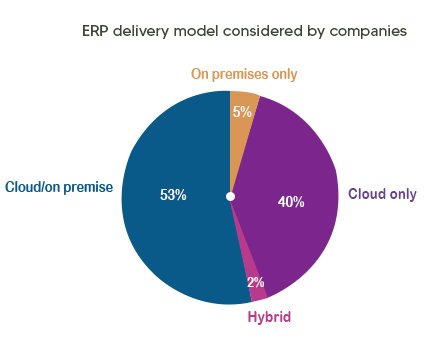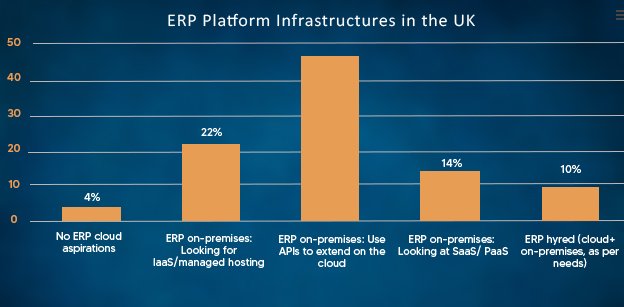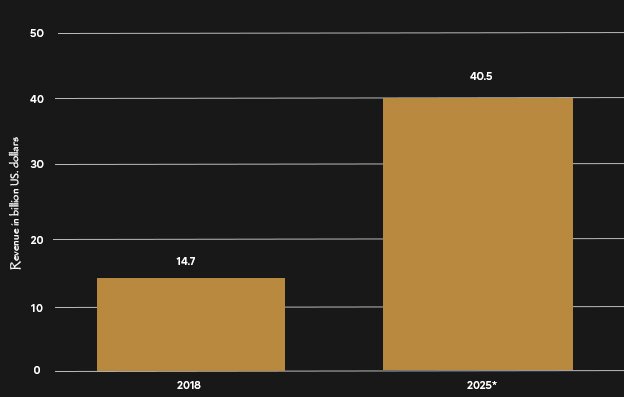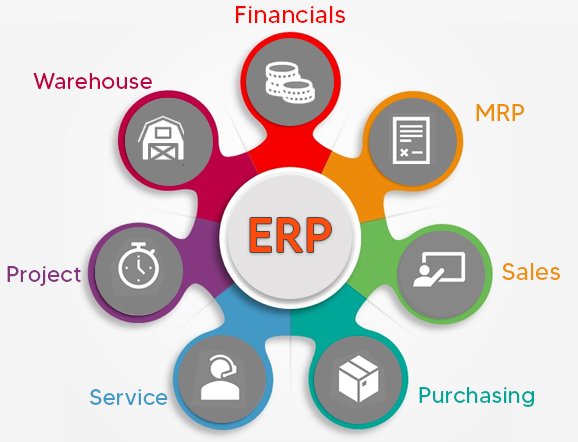With the massive emergence of business technologies, more and more enterprises are realising the significance of automation software and looking for reliable ways to streamline workflows. SMEs need software that can be integrated into multiple processes, increases productivity, and develops a well-connected workforce. And this is where Enterprise Resource Planning (ERP) system comes in.
If you and your team are struggling with old or legacy systems, it’s high time to implement a modern ERP system in Malaysia or elsewhere to manage your business operations within a single database. However, you can’t just jump onto anything all of a sudden; you need to make the right selection, especially when it comes to ERP implementation. So before you go ahead with ERP implementation, make sure to be prepared with the project team, ERP vendor, and strategy for success.
Don’t worry; we’ve created a comprehensive guide that will prepare you to step towards the ERP software.
Let’s get started!
Introduction to ERP System
Enterprise Resource Planning (ERP) is a scalable, innovative, and flexible business management solution that covers all facets of a business such as production, procurement, finance, inventory, supply chain, human resources, job costing, and other critical processes. It includes multiple applications to integrate and automate the core business operations and information on a centralised system through a multi-level interface. It is said to be an aid to manage processes and run all departments across the organisation with peace of mind.
Different Types of ERP System

Source: SelectHub
When we talk about ERP solutions, there are three types:
- On-Premise
The on-premise private system is installed on the business’ server and hardware and further handled by your IT staff. This is certainly the least recommended out of three options as companies need to manage and maintain the security of their own data. This could be a good option for businesses that have an internal team of IT experts to keep the track of data.
- Hosted Private Cloud
The SaaS (Software-as-a-Service) system is reflected immediately on the system. Companies that choose this route will have an external team to manage their platform and host data servers in their cloud. It could be a cost-effective option as you just need to pay for software, not the additional hardware.
- Hybrid Cloud
As the name suggests, it is a combination of both on-premise and hosted cloud solutions. Companies can choose to keep some of their servers in-house, yet use a hosted cloud system to handle and disperse data among different locations. This could be a reliable option for companies who are seeking to incorporate applications or mobility to their existing on-premise system or planning to switch to a web-based solution.

Source: Accenture
As you can witness, Cloud ERP software is a highly effective, smart, and innovative way to manage business information across the entire organisation. That’s why, we recommend SMEs to adopt cloud ERP rather than on-premise ERP system to greatly enjoy low upfront cost, quick deployment options, high mobility, and data security.
Why SMEs Should Use ERP Solution?
Without the ability to track orders, materials, billing, shipping, and sale within a single system, your business won’t be able to compete in today’s fast-changing industry. Don’t worry; easy ERP implementation has opened many opportunities for businesses to expand wisely, regardless of their sizes to reap the rewards of advanced resource management.

Source: Panorama Consulting
ERP systems can help automate business processes, generate reports, and gives access to all your company’s data in one place. SMEs can secure the best results using built-in analytics and world-class functionalities for multiple operations, including production, job costing, finance, inventory management, accounting, reporting, budgeting, and procurement. With modern ERP software, companies no longer need to rely on manual tasks and scattered spreadsheets, offering you the most reliable software to unlock your real potential and achieve digital transformational goals.
Thanks to the mobile and cloud technology available in the market, making the adoption of ERP software for SMEs an excellent choice to thrive in a competitive environment even in times of uncertainty. Below are some perks of using an ERP system:
- Improves efficiency
- Safe and secure
- Improved supply chain management
- Easy to comply with regulatory forms
- All expenses and information are focused on one centralised system
- Workflow is consistent
- Makes reporting and analysing easy
- Enhanced customer satisfaction
- Low infrastructure cost
- Effective project management
- Accelerates business growth
How to Choose the Right ERP System?
Since ERPs have a broad scope, it can be difficult to identify a suitable one for your company’s needs. It’s best to focus on the core objectives and requirements of your business to make the right selection. When selecting an ERP solution, it is good to consider the following aspects:
- Is ERP the best fit for your enterprise?
- Which ERP systems are very popular?
- What features and functionality do you need?
- Is it being utilised on-premises or in the cloud, or both?
- Are you being practical?
- What does success look like?
- What resources do you need?
- Have you found a genuine software partner?
Once you get answers to these, you will be able to make a better-informed decision on what kind of ERP will fit best for your business.

Source: Statista
The statistics shown by Statista reveals that the global cloud ERP market was expected to be worth 40.5 billion U.S. dollars by 2025, emerging at a GAGR of 13.6% during 2019 and 2025. After all, the system is comprised of multiple modules, each works on different areas and departments that can be catered to a wide range of industries.
How do you know if you need ERP?
Some SMEs with relatively a low volume of transactions may find standalone accounting software sufficient to manage their finances, sales, and inventory. The turning point falls when the company starts to scale and hit a specific level of growth. The wall of expansion may vary, but some common signs indicate the situation when your business needs an ERP system.

Source: Evans Data Corporation
Let’s have a closer look at those indicators:
- Increased administrative and financial workload due to a high volume of transactions and conflicting internal procedures
- Employees are having a hard time managing all facets of a business at once
- The existing system doesn’t seem compatible, making it challenging to evaluate business information
- Recurring stock-out, consistently missing the project deadlines and facing delays
- Customers are getting exhausted at being bounced from one location to another to get their issues or queries resolved
- Being repeatedly late in generating reports, relevant information, and taxation policies
Keep in mind, when the data is stored across different sources and retrieved from various departments within the organisation, it makes it nearly impossible to stay up-to-date and informed at all times. That’s why at Netsense, we suggest companies opt for a fully integrated ERP system to manage their sales team and monitor leads to seeking better opportunities.
Which is the best ERP Software for a Growing Business?
The search for the ERP system with a focus on growth and complexity isn’t as easy as it seems. But trust us, getting all the way deep into details will surely pay off. If you’re planning to switch from legacy systems and add more value to your business, Acumatica ERP software could be an excellent choice.
“Acumatica is a great fit. Its ease of use, scalability, and feature set are right on.”
Source: Gartner Peer Insights
Acumatica ERP is a complete, multi-site business management system, designed for small and mid-sized company’s right from the beginning, allowing enterprises to manage everything from basic accounting to fully ERP functionality. It can be used as a full SaaS, cloud, or on-premises system.

Let’s break down the core functionality of Acumatica ERP into a series of suites and Editions:
- Financial Management
Acumatica Financial Management is simple and comprehensive enough to manage financial processes, including fixed assets, reports, recurring and deferred revenue, and cash management.
- Customer Management
Customer Relationship Management (CRM) is fully integrated with other suites to provide real-time access to data on all activities such as orders, quotes, payments, invoices, etc.
- Project Accounting
Acumatica Project Accounting system can manage challenging billing rules and projects based on industry-specific attributes.
- Distribution
From quote-to-cash and purchase requisition to payment, it can help prevent delays and mitigate errors. Some features include warehouse management, serial number tracking, automated POs, etc.
- Manufacturing
This edition includes MRP, BOM and routing, quoting and estimating, production control, product configurator, and advanced planning and scheduling.
- Field Service
It provides a real-time view of business activities and simplifies dispatching, reduces response times and overall expenses. It works with sales, CRM, inventory, financial reporting, purchasing, and accounting.
With best-in-class features and superior usability, the Acumatica cloud ERP system seems to be a comprehensive solution to manage several aspects of an organisation. The system provides the flow of information across the enterprise which brings accuracy, harmony, and quick decision-making.
What to Expect When You Incorporate an ERP System?
With all the information mentioned above, we can clearly say that ERP isn’t a ‘one-size-fits-all’ solution for companies. There is a wide range of ERP software solutions available in the market with different combinations of modules, features, and functionality.
Firstly, when you’re implementing the ERP system, you must look into:
- What industry you are serving
- What is the size and type of your company?
- What specific tracking and automation capabilities you need

Source: SelectHub
An ERP system provides a multitude of functions than a standard standalone CRM system, allowing companies to track reports and review customer interactions, everything in one centralised location. By having a system that incorporates best-in-class functionality and modules within a single database, you will be more productive and organised at all stages of your business.
It’s ideal to take an adequate amount of time to look at your business processes and determine what kind of ERP functions will better suit your needs. After the software is incorporated and implemented, all necessary business information has been input, your workforce is trained, and you will start to notice a big difference in day-to-day tasks and the level of efficiency.
Here’s what you can expect:
- Fast and secure order processing
- Seamless communication in all departments across the entire organisation
- Automation of sales orders, inventory management, and report generation, which means less tedious data entry
- A comprehensive view of business activities and performance for improved decision-making and establishment of new processes
- Accurate and quick tracking of business information due to automation capabilities, leaving less or no room for human errors and data duplication
There is no denying that ERP implementation proves to be advantageous for all sizes and types of businesses. From industry-specific functionality like HR and payroll to tracking of sales and orders, every industry can find the right ERP solution to meet their unique needs and complete day-to-day tasks more efficiently and effectively.
How much does Acumatica ERP Cost?
The short answer is: ERP pricing structure depends on what you need. ERP systems are complex and you need to narrow down several factors before a final price can be stated. The cost of ERP may vary depending on multiple factors, such as:
- Licensing Policy
- Number of users
- What kind of industry you’re involved
- How many customisations and integrations you need
- What applications do you want?
- What type of license option are you choosing: SaaS Subscription, Private Perpetual License, or Private Cloud Subscription?
- What is your estimated level of consumption based on business transactions and data storage?

Source: Forrester
Fortunately, the Acumatica ERP system and pricing is different than other software solutions because it charges based on the resources you use, not by the number of users. This means it allows you to add casual users, customers, and suppliers without asking for additional licenses. Hence, the cost depends on the features and resources you wish to use, not the number of users who access the software. For in-depth details on Acumatica ERP’s consumption based pricing model, give a closer look at Acumatica ERP pricing.
Looking Ahead to the Scope of ERP System
ERP software is considered an intelligent and effective tool that allows businesses to reach their full potential and achieve their digital transformational goals. It has already begun to combine with artificial intelligence and machine learning to possess analytical and predictive capabilities.

Source: Statista
Netsense, being a Gold Certified Acumatica Partner in Malaysia and Singapore combines the power of cloud, cohesive technology to support SMEs automate their entire process, and mitigate risks. Our industry-specific ERP solutions is tailored to meet your business needs and processes, including field service, commerce, production, distribution, and construction. Whether you want to outgrow your existing software or looking for a more advanced solution for your business, we strive to provide you with reliable support to streamline your ERP implementation experience.
Our professional team will closely work with you to understand your specific business needs, determine proper resources, and modules for your organisation, and present you with the most scalable ERP solution that scales as you grow.
The opportunities are endless, especially with the Acumatica cloud-based ERP system, and one thing is for sure – the journey will be more fascinating from here on. To learn more, schedule a demonstration of Acumatica ERP to find out if it is suitable for your company.


